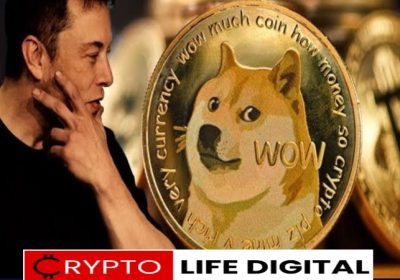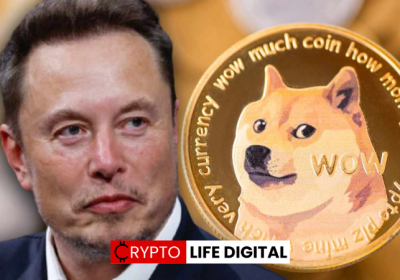Dogecoin For Short and POPCAT For Long: The Safest Betting Options, Analyst Recommends

Dogecoin continues to be a prominent entity in the volatile cryptocurrency landscape, particularly as the market braces for upcoming elections. Concurrently, new entrants in the memecoin sector, such as POPCAT, are gaining attention. Financial analyst and entrepreneur Ran Neuner observes that while Dogecoin has achieved substantial gains, it is poised for considerable volatility contingent on the election outcomes.
Neuner highlights a potential victory by Kamala Harris that could precipitate a significant decline in Dogecoin’s value, emphasizing the critical nature of this situation for investors seeking to hedge their positions. This insight is crucial for navigating the unpredictable market climate, particularly as memecoins gain traction and influence.
Dogecoin and POPCAT as Strategic Investments
Neuner posits that investing in memecoins—specifically Dogecoin and POPCAT—may represent a strategic advantage in the current market dynamics. As the largest gainer among major cryptocurrencies by market capitalization, Dogecoin’s performance is closely tied to electoral developments.
He warns that if Donald Trump secures a win, memecoins could experience dramatic rallies, whereas a Kamala Harris victory is likely to lead to steep declines in the same assets. Nonetheless, Neuner reassures investors that established memecoins show resilience to macroeconomic pressures. Among various trading strategies, he recommends focusing on major memecoins instead of obscure alternatives. Purchasing these well-regarded coins at lower prices is expected to yield positive returns as the market fluctuates.
Neuner advocates for a dual-position strategy involving POPCAT, a recently Binance-supported Solana memecoin. He considers it highly responsive to market movements, likely to exhibit pronounced volatility in either direction.
For practical application, he suggests that investors allocate $10,000 long on POPCAT while simultaneously taking a $10,000 short position on Dogecoin. In the event Trump wins, both POPCAT and Dogecoin are projected to rise, but he anticipates greater price movements in POPCAT. Conversely, if Kamala were to win, Dogecoin is expected to suffer more substantial losses, benefiting the short position. While the long position in POPCAT may decline, Neuner believes the overall gains from this hedge could outweigh the losses from Dogecoin, establishing this strategy as an astute hedge during uncertain electoral periods.
The Unstoppable Debt Clock
Neuner also raises alarms about the persistent issue of debt within the United States. As the nation approaches a pivotal election, he underscores that this cycle of increased spending and borrowing will not be mitigated by electoral outcomes.
The U.S. debt clock continues to tick uncontested, and Neuner argues that the only recourse left for the government is to resort to money printing, creating a detrimental cycle of borrowing and spending with far-reaching economic implications. He contends that the addiction to debt complicates any prospective recovery from this financial predicament.
Regardless of electoral results, the underlying issues related to debt remain unchanged. With continued monetary expansion on the horizon, Neuner suggests Bitcoin as a viable hedge against fiat currency devaluation. He asserts that, irrespective of political influence, Bitcoin has evolved into a reliable custodian of value amid an unstable financial system.
He cites institutional movements such as British pension funds allocating 3% of their portfolios to Bitcoin, contrasting it with U.S. pension funds, which currently show a preference for Ethereum. For instance, the Michigan Pension Fund has recently invested $10 million in Ethereum via Grayscale’s ETFs.
Despite these institutional shifts, Neuner cautions that “money printing is going to continue.” Should this trend persist among pension funds, the value of Bitcoin could potentially surge, especially for investors like Michael Saylor who could see substantial wealth accumulation.
Impact of Election on the Crypto Market
Neuner contends that, despite the anticipated significance of upcoming elections, the outcomes may not fundamentally alter the trajectory of the cryptocurrency market. He notes historical trends indicating that Bitcoin’s price movements are primarily influenced by its halving cycles, rather than electoral results. His analysis suggests that Bitcoin’s price frequently rallies in the months following its halving events.
Neuner asserts, “It does not matter who wins,” emphasizing that Bitcoin’s market dynamics often outweigh political factors. He further considers how political leadership might shape cryptocurrency regulations; under a Kamala Harris administration, regulatory stances could be less stringent than in previous years, potentially fostering a more favourable environment for cryptocurrency development.
Read Also: Terra Shuts the Shuttle Bridge: What’s On The Horizon for Terra Classic Price?
Follow us on Twitter, Facebook, Telegram, and Google News

Kayode Michael is a seasoned cryptocurrency analyst, successful trader, and skilled writer with a strong command of cryptocurrency analysis and price action. He leverages his technical analysis skills to provide valuable insights into emerging market trends and potential opportunities for investors to make informed decisions.










